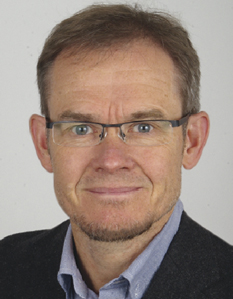< Back to All Events
|
A talk on Theory and practice of spherical indexing of EBSD patterns
 Speaker Name
Speaker Name
Prof. Stefan Zaefferer

October 29, 2025

03:00 PM
|SPEAKER BIO
Stefan Zaefferer studied physical metallurgy and metal physics at the TU Clausthal in Germany. His PhD thesis with the title "Development and application of a computer software for the determination of deformation mechanisms in materials with hexagonal crystal structure by transmission electron microscopy? was carried out at the TU Clausthal as well. After this, he went for a 2.5 years post doc time at Paris and a 1.5 years time at Kyoto. During this time he focussed mainly on the deformation and recrystallization mechanisms of metals with fcc crystal structure by TEM. At the same time he developed the computer program TOCA "Tools for orientation determination and crystallographic analysis" an on-line TEM-Program for indexing of diffraction patterns and microscope control "virtual microscope?. Since 2000 he is head of the research group "Microscopy and Diffraction? at the MPIE. In this time he has mainly dealt with the development of electron diffraction techniques in SEM and TEM and applied these methods to the investigation of various metallic and intermetallic materials. Currently, SZ tries to focus his research activities on projects where environmental protection and sustainability play an important role, e.g. materials for thermal solar power plants, photovoltaic materials, and light, abundant and recyclable structural materials.
In 2009 he passed his habilitation at the RWTH Aachen and teaches there, together with colleagues from the RWTH and the MPIE, a self-developed master course "Microstructures, Microscopy and Modelling?. At the same time he teaches the class "Electron diffraction methods in the SEM? at the MPIE as well as a guest professor at various universities.
|ABSTRACT
Traditional, EBSD patterns are analysed in a three-step process consisting of band detection using a Hough transform, band indexing using a variety of approaches, and orientation determination from spatial arrangement of the consistently indexed crystallographic planes. This approach can be convoluted into a single step process where precalculated diffraction patterns for all possible orientations are compared to experimental diffraction patterns. This so-called dictionary method has advantages over the classical approach, mainly because it uses not only the positional information of diffraction bands but also their brightness and internal structure. Nevertheless, it suffers from extremely high computation demand and limited angular accuracy of the dictionary. These disadvantages are overcome by spherical indexing where the comparison of experimental and theoretical patterns is not done in pattern space but in spherical harmonics space. To this aim both, master pattern and experimental pattern are described by spherical harmonic functions which are then compared by a spherical cross correlation.
This approach has significant over all other techniques: it is extremely robust with respect to orientation determination even from very weak patterns and with respect to the determination of crystallographic phases, it increases the angular resolution of orientation determination by up to 10 times, and it is very quick compared to dictionary indexing.
In the talk I will compare the different techniques, explain the very interesting mathematical background of spherical indexing and illustrate the technique with a number of challenging examples. A live presentation of the software will also be included.

